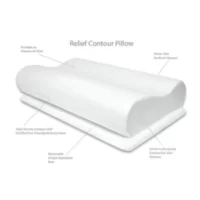What Causes Neck Pain Without Injury?
Neck pain without injury frequently plagues the clinic. Experiencing neck pain without any apparent triggering event can be particularly vexing.
This discomfort can often be attributed to microtraumas resulting from factors such as poor posture, inadequate sleeping positions, or repeated strenuous movements throughout the day that exert significant strain on the neck. This pain typically emanates from issues like muscle strains, sprained facet joints, or bulging discs. Rather than stemming from a single injury, these structures suffer injury due to persistent microtrauma.
So, how can one rectify their posture?
The spinal column comprises three distinct curves: a concave curve in the lower back, a convex curve in the mid-back, and another concave curve in the neck. Research has revealed that individuals with neck pain tend to flatten the curve in their neck, leading to a forward head posture.
Injuries in any part of the spine can lead to changes in spinal alignment, which often extend to affect the neck. For instance, lower back pain can result in a flattened lower back curve—a common postural adaptation. This increased demand on the muscles that support the head can eventually lead to muscle spasms, pain, or even muscle failure, allowing the head to shift forward. This is just one of several potential mechanisms, and your physiotherapist can pinpoint previous injuries that may contribute to your neck pain and its impact on your neck.
Furthermore, sustained positions like frequently looking down at a phone, laptops, or during gaming can also lead to a forward head posture. This phenomenon is commonly referred to as “text neck” and is on the rise in our community.
What, then, are the consequences of a forward head posture?
The neck’s vertebral level comprises three joints: the vertebral bodies and discs in the front and facet joints in the back, located on either side of the spinal cord.
A forward head posture shifts the weight of the head forward, subjecting the vertebral bodies and neck discs to undue stress. The loss of the neck’s natural curve has been associated with conditions like cervical spondylosis, bulging discs, and chronic neck pain.
This condition has garnered the nickname “Nerd Neck.”
How should one sleep when experiencing neck pain?
To minimise strain on the front joints of the neck, which include the vertebral body and disc, consider sleeping in a side-lying position as upright as possible, avoiding the fetal position, which can promote a forward head posture. You can achieve this by adjusting your pillow a few inches higher and stretching your neck to meet it.
For those who sleep on their back, choosing a pillow that fully supports the neck is crucial to prevent rotation. The pillow should not be overly thick to prevent encouraging a forward head posture. Nevertheless, sleeping on your back is generally not recommended due to the sustained neck positions required throughout the night.
More Info: Recommended & Healthy Sleeping Postures
Resolving Your Neck Pain
Whether your neck pain arises from sleep positioning, poor posture, or repetitive neck-related movements, a trained physiotherapist is equipped to identify and address the underlying causes. Book to see your physiotherapist for an individualised assessment.
More info: Neck Pain



























































